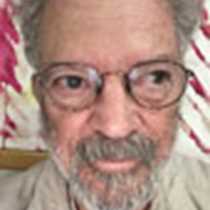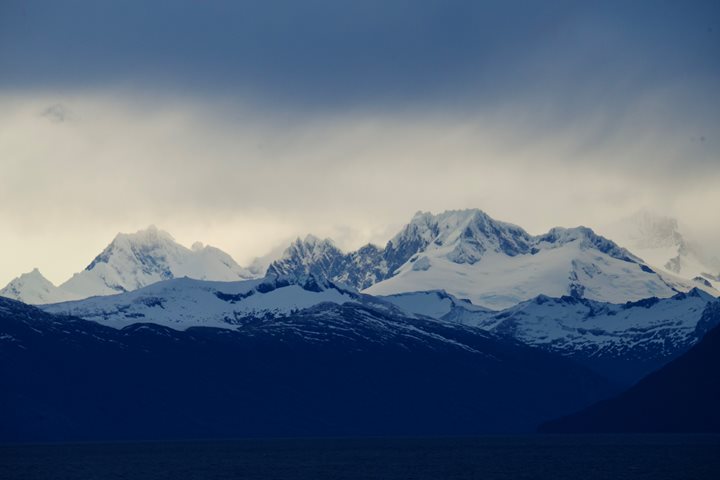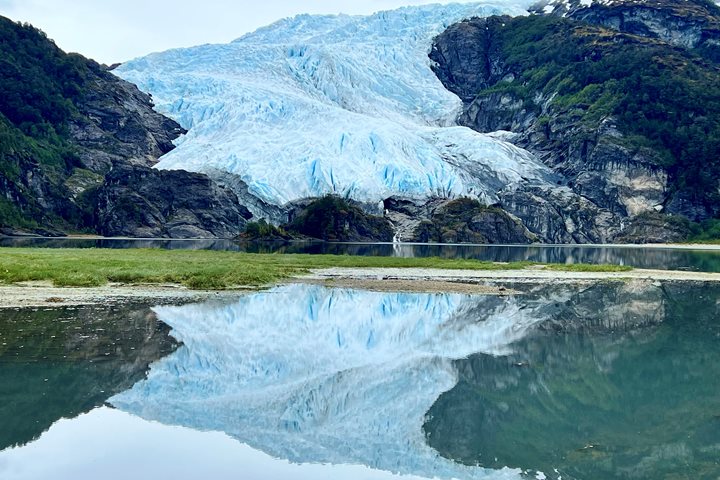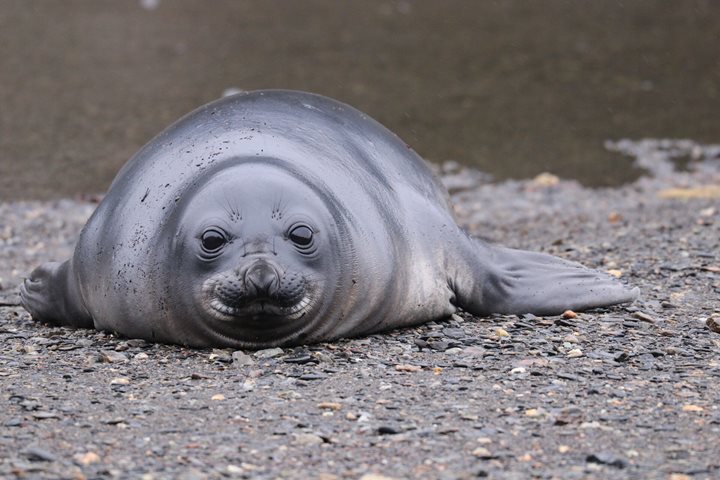This morning we found ourselves at anchor near the town of Ancud at the north end of Chiloé Island. With about 30,000 inhabitants, it is the second largest town on the island. It is a port town with many fishing boats, large and small, including a particularly impressive number of open fiberglass boats outfitted with hookah rigs for diving and harvesting clams and crabs. Ancud is the last town that flew the Spanish flag.
It was a bit cloudy and a bit windy, but everyone was eager to start the day’s adventures. There were two activity options for the day, one being a river ride and hike at Chepu. Our group took off in two buses and headed down the coast. Our destination was on the western side of the island, near the ocean. There was interesting scenery outside of town, farms, and forest, although much of the forest is actually Australian eucalyptus tree farms. Off on a gravel road en route to our stop, the first bus spotted a pudu—a very small species of deer, possibly the smallest in the world at barely 16 inches at the shoulder. The pudu, a very shy animal, left just as the second bus pulled up.
After loading into several boats, we headed downriver to an isolated ranch for our walk. There were many birds on the river, including large groups of the Chiloé wigeon—the only Chiloé duck with a white butt. We crossed the ranch, admiring large, hard-working, and photogenic cows and the various trees in flower—blue, yellow, white, and red.
After a bit of a frolic on the beach, it was back to the buses and on to lunch. This time, the second bus spotted the pudu, and the universe was once again in balance! At the restaurant, we found pisco sours and small eats to prepare us for a tour of the kitchen. The kitchen, outside and behind the restaurant, was a hole in the ground filled with hot rocks mussels, clams, sausages, beef, and potato cakes—a special Chiloé meal called Curanto. It was excellent, and both red and white wine pair great with it!









